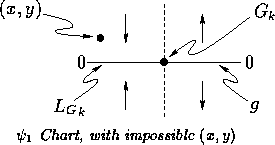Consider the constant function ![]() .
Since g is constant,
.
Since g is constant, ![]() .
Take any
.
Take any ![]() ;
a simple proof by contradiction, which follows, shows that
;
a simple proof by contradiction, which follows, shows that
![]() is an exact bound of g:
is an exact bound of g:
![]()
Assume there is a point
![]() such that
such that ![]() .
Let
.
Let ![]() , so
, so ![]() :
:
![]()
Furthermore, ![]() and
and ![]() together imply that
together imply that ![]() .
.

So, for any ![]() ,
, ![]() .
It follows that
.
It follows that ![]() is a lower and upper bound for g,
over
is a lower and upper bound for g,
over ![]() :
:
![]()
![]()
![]()
| Jeff Tupper | March 1996 |